- Home
- Graham Hancock
Fingerprints of the Gods Page 15
Fingerprints of the Gods Read online
Page 15
Virginia, 1992, p. 105.
6 Ibid., p. 103.
7 The Feathered Serpent and the Cross, p. 55.
8 Mary Miller and Karl Taube, The Gods and Symbols of Ancient Mexico and the Maya,
Thames & Hudson, London, 1993, pp. 96.
102
Graham Hancock – FINGERPRINTS OF THE GODS
Children of the Fifth Sun
Like the many different peoples and cultures that had preceded them in
Mexico, the Aztecs believed that the universe operated in great cycles.
The priests stated as a matter of simple fact that there had been four
such cycles, or ‘Suns’, since the creation of the human race. At the time
of the conquest, it was the Fifth Sun that prevailed. And it is within that
same Fifth Sun, or epoch, that humankind still lives today. This account is
taken from a rare collection of Aztec documents known as the Vaticano-
Latin Codex:
First Sun, Matlactli Atl: duration 4008 years. Those who lived then ate water maize
called atzitzintli. In this age lived the giants ... The First Sun was destroyed by
water in the sign Matlactli Atl (Ten Water). It was called Apachiohualiztli (flood,
deluge), the art of sorcery of the permanent rain. Men were turned into fish. Some
say that only one couple escaped, protected by an old tree living near the water.
Others say that there were seven couples who hid in a cave until the flood was
over and the waters had gone down. They repopulated the earth and were
worshipped as gods in their nations ...
Second Sun, Ehecoatl: duration 4010 years. Those who lived then ate wild fruit
known as acotzintli. This Sun was destroyed by Ehecoatl (Wind Serpent) and men
were turned into monkeys ... One man and one woman, standing on a rock, were
saved from destruction ...
Third Sun, Tleyquiyahuillo: duration 4081 years. Men, the descendants of the
couple who were saved from the Second Sun, ate a fruit called tzincoacoc. This
Third Sun was destroyed by fire ...
Fourth Sun, Tzontlilic: duration 5026 years ... Men died of starvation after a deluge
of blood and fire ...9
Another ‘cultural document’ of the Aztecs that has survived the ravages
of the conquest is the ‘Sun Stone’ of Axayacatl, the sixth emperor of the
royal dynasty. This huge monolith was hewn out of solid basalt in AD
1479. It weighs 24.5 tons and consists of a series of concentrically
inscribed circles, each bearing intricate symbolic statements. As in the
codex, these statements focus attention on the belief that the world has
already passed through four epochs, or Suns. The first and most remote
of these is represented by Ocelotonatiuh, the jaguar god: ‘During that
Sun lived the giants that had been created by the gods but were finally
attacked and devoured by jaguars.’ The Second Sun is represented by the
serpent head of Ehecoatl, the god of the air: ‘During that period the
human race was destroyed by high winds and hurricanes and men were
converted into monkeys.’ The symbol of the Third Sun is a head of rain
and celestial fire: ‘In this epoch everything was destroyed by a rain of fire
from the sky and the forming of lava. All the houses were burnt. Men
9 From the Vaticano-Latin Codex 3738, cited in Adela Fernandez, Pre-Hispanic Gods of
Mexico, Panorama Editorial, Mexico City, 1992, pp. 21-2.
103
Graham Hancock – FINGERPRINTS OF THE GODS
were converted into birds to survive the catastrophe.’ The Fourth Sun is
represented by the head of the water-goddess Chalchiuhtlicue:
‘Destruction came in the form of torrential rains and floods. The
mountains disappeared and men were transformed into fish.’10
The symbol of the Fifth Sun, our current epoch, is the face of Tonatiuh,
the sun god himself. His tongue, fittingly depicted as an obsidian knife,
juts out hungrily, signalling his need for the nourishment of human blood
and hearts. His features are wrinkled to indicate his advanced age and he
appears within the symbol Ollin which signifies Movement.11
Why is the Fifth Sun known as ‘The Sun of Movement’? Because, ‘the
elders say: in it there will be a movement of the earth and from this we
shall all perish.’12
And when will this catastrophe strike? Soon, according to the Aztec
priests. They believed that the Fifth Sun was already very old and
approaching the end of its cycle (hence the wrinkles on the face of
Tonatiuh). Ancient meso-American traditions dated the birth of this epoch
to a remote period corresponding to the fourth millennium BC of the
Christian calendar.13 The method of calculating its end, however, had
been forgotten by the time of Aztecs.14 In the absence of this essential
information, human sacrifices were apparently carried out in the hope
that the impending catastrophe might be postponed. Indeed, the Aztecs
came to regard themselves as a chosen people; they were convinced that
they had been charged with a divine mission to wage war and offer the
blood of their captives to feed Tonatiuh, thereby preserving the life of the
Fifth Sun.15
Stuart Fiedel, an authority on the prehistory of the Americas, summed
up the whole issue in these words: ‘The Aztecs believed that to prevent
the destruction of the universe, which had already occurred four times in
the past, the gods must be supplied with a steady diet of human hearts
and blood.’16 This same belief, with remarkably few variations, was shared
by all the great civilizations of Central America. Unlike the Aztecs,
however, some of the earlier peoples had calculated exactly when a great
movement of the earth could be expected to bring the Fifth Sun to an
end.
10 Eric S. Thompson, Maya History and Religion, University of Oklahoma Press, 1990, p.
332. See also Aztec Calendar: History and Symbolism, Garcia y Valades Editores, Mexico
City, 1992.
11 Ibid.
12 Pre-Hispanic Gods of Mexico, p. 24.
13 Peter Tompkins, Mysteries of the Mexican Pyramids, Thames & Hudson, London, 1987,
p. 286.
14 John Bierhorst, The Mythology of Mexico and Central America, William Morrow & Co.,
New York, 1990, p. 134.
15 World Mythology, (ed. Roy Willis, BCA, London, 1993, p. 243.
16 Stuart J. Fiedel, The Prehistory of the Americas, (second edition), Cambridge University
Press, 1992, pp. 312-13.
104
Graham Hancock – FINGERPRINTS OF THE GODS
Lightbringer
No documents, only dark and menacing sculptures, have come down to
us from the Olmec era. But the Mayas, justifiably regarded as the greatest
ancient civilization to have arisen in the New World, left behind a wealth
of calendrical records. Expressed in terms of the modern dating system,
these enigmatic inscriptions convey a rather curious message: the Fifth
Sun, it seems, is going to come to an end on 23 December, AD 2012.17
In the rational intellectual climate of the late twentieth century it is
unfashionable to take doomsday prophecies seriously. The general
consensus is that they are the products of superstitious minds and can
safely be ignored. As I travelled around Mexico, however, I was from time
>
to time bothered by a nagging intuition that the voices of the ancient
sages might deserve a hearing after all. I mean, suppose by some crazy
offchance they weren’t the superstitious savages we’d always believed
them to be. Suppose they knew something we didn’t? Most pertinent of
all, suppose that their projected date for the end of the Fifth Sun turned
out to be correct? Suppose, in other words, that some truly awful
geological catastrophe is already unfolding, deep in the bowels of the
earth, as the wise men of the Maya predicted?
In Peru and Bolivia I had become aware of the obsessive concern with
the calculation of time shown by the Incas and their predecessors. Now,
in Mexico, I discovered that the Maya, who believed that they had worked
out the date of the end of the world, had been possessed by the same
compulsion. Indeed, for these people, just about everything boiled down
to numbers, the passage of the years and the manifestations of events.
The belief was that if the numbers which lay beneath the manifestations
could be properly understood, it would be possible to predict successfully
the timing of the events themselves.18 I felt disinclined to ignore the
obvious implications of the recurrent destructions of humanity depicted
so vividly in the Central American traditions. Coming complete with
giants and floods, these traditions were eerily similar to those of the faroff Andean region.
Meanwhile, however, I was keen to pursue another, related line of
inquiry. This concerned the bearded white-skinned deity named
Quetzalcoatl, who was believed to have sailed to Mexico from across the
seas in remote antiquity. Quetzalcoatl was credited with the invention of
the advanced mathematical and calendrical formulae that the Maya were
later to use to calculate the date of doomsday.19 He also bore a striking
17 Professor Michael D. Coe, Breaking the Maya Code, Thames & Hudson, London, 1992,
pp. 275-6. Herbert Joseph Spinden’s correlation gives a slightly earlier date of 24
December, AD 2011. See Mysteries of the Mexican Pyramids, p. 286.
18 Mysteries of the Mexican Pyramids, p. 286.
19 World Mythology, p. 240. See also Encyclopaedia Britannica, 1991, 9:855, and Lewis
Spence, The Magic and Mysteries of Mexico, Rider, London, 1922, pp. 49-50.
105
Graham Hancock – FINGERPRINTS OF THE GODS
resemblance to Viracocha, the pale god of the Andes, who came to
Tiahuanaco ‘in the time of darkness’ bearing the gifts of light and
civilization.
106
Graham Hancock – FINGERPRINTS OF THE GODS
Chapter 14
People of the Serpent
After spending so long immersed in the traditions of Viracocha, the
bearded god of the distant Andes, I was intrigued to discover that
Quetzalcoatl, the principal deity of the ancient Mexican pantheon, was
described in terms that were extremely familiar.
For example, one pre-Colombian myth collected in Mexico by the
sixteenth-century Spanish chronicler Juan de Torquemada asserted that
Quetzalcoatl was ‘a fair and ruddy complexioned man with a long beard’.
Another spoke of him as, ‘ era Hombre blanco; a large man, broad
browed, with huge eyes, long hair, and a great, rounded beard— la barba
grande y redonda.’1 Another still described him as
a mysterious person ... a white man with strong formation of body, broad
forehead, large eyes, and a flowing beard. He was dressed in a long, white robe
reaching to his feet. He condemned sacrifices, except of fruits and flowers, and
was known as the god of peace ... When addressed on the subject of war he is
reported to have stopped up his ears with his fingers.2
According to a particularly striking Central American tradition, this ‘wise
instructor ...’
came from across the sea in a boat that moved by itself without paddles. He was a
tall, bearded white man who taught people to use fire for cooking. He also built
houses and showed couples that they could live together as husband and wife;
and since people often quarreled in those days, he taught them to live in peace.3
Viracocha’s Mexican twin
The reader will recall that Viracocha, in his journeys through the Andes,
went by several different aliases. Quetzalcoatl did this too. In some parts
of Central America (notably among the Quiche Maya) he was called
Gucumatz. Elsewhere, at Chichen Itza for example, he was known as
Kukulkan. When both these words were translated into English, they
turned out to mean exactly the same thing: Plumed (or Feathered)
Serpent. This, also, was the meaning of Quetzalcoatl.4
There were other deities, among the Maya in particular, whose
1 Juan de Torquemada, Monarchichia indiana, volume I, cited in Fair Gods and Stone
Faces, pp. 37-8.
2 North America of Antiquity, p. 268, cited in Atlantis: The Antediluvian World, p. 165.
3 The Mythology of Mexico and Central America, p. 161.
4 See Nigel Davis, The Ancient Kingdoms of Mexico, Penguin Books, London, 1990, p.
152; The Gods and Symbols of Ancient Mexico and the Maya, pp. 141-2.
107
Graham Hancock – FINGERPRINTS OF THE GODS
identities seemed to merge closely with those of Quetzalcoatl. One was
Votan, a great civilizer, who was also described as pale-skinned, bearded
and wearing a long robe. Scholars could offer no translation for his name
but his principal symbol, like that of Quetzalcoatl, was a serpent.5
Another closely related figure was Itzamana, the Mayan god of healing,
who was a robed and bearded individual; his symbol, too, was the
rattlesnake.6
What emerged from all this, as the leading authorities agreed, was that
the Mexican legends collected and passed on by Spanish chroniclers at
the time of the conquest were often the confused and conflated products
of extremely long oral traditions. Behind them all, however, it seemed
that there must lie some solid historical reality. In the judgement of
Sylvanus Griswold Morley, the doyen of Maya studies:
The great god Kukulkan, or Feathered Serpent, was the Mayan counterpart of the
Aztec Quetzalcoatl, the Mexican god of light, learning and culture. In the Maya
pantheon he was regarded as having been the great organizer, the founder of
cities, the former of laws and the teacher of the calendar. Indeed his attributes
and life history are so human that it is not improbable that he may have been an
actual historical character, some great lawgiver and organizer, the memory of
whose benefactions lingered long after death, and whose personality was
eventually deified.7
All the legends stated unambiguously that
Quetzalcoatl/Kukulkan/Gucumatz/Votan/Itzamana had arrived in Central
America from somewhere very far away (across the ‘Eastern Sea’) and that
amid great sadness he had eventually sailed off again in the direction
whence he had come.8 The legends added that he had promised solemnly
that he would return one day9—a clear echo of Viracocha it would be
almost perverse to ascribe to coincidence. In addition, it will be recalled
that Viracocha’s departure across the waves of the
Pacific Ocean had
been portrayed in the Andean traditions as a miraculous event.
Quetzalcoatl’s departure from Mexico also had a strange feel about it: he
was said to have sailed away ‘on a raft of serpents’.10
All in all, I felt Morley was right in looking for a factual historical
background behind the Mayan and Mexican myths. What the traditions
seemed to indicate was that the bearded pale-skinned foreigner called
Quetzalcoatl (or Kukulkan or whatever) had been not just one person but
probably several people who had come from the same place and had
belonged to the same distinctively non-Indian ethnic type (bearded,
white-skinned, etc.). This wasn’t only suggested by the existence of a
5 Fair Gods and Stone Faces, pp. 98-9.
6 Ibid, p. 100.
7 Sylvanus Griswold Morley, An Introduction to the Study of Maya Hieroglyphs
(introduction by Eric S. Thompson), Dover Publications Inc., New York, 1975, pp. 16-17.
8 New Larousse Encyclopaedia of Mythology, Paul Hamlyn, London, 1989, pp. 437, 439.
9 Ibid., p. 437.
10 Fair Gods and Stone Faces, p. 62.
108
Graham Hancock – FINGERPRINTS OF THE GODS
‘family’ of obviously related11 but slightly different gods sharing the
symbol of the snake. Quetzalcoatl/Kukulkan/Itzamana was quite
explicitly portrayed in many of the Mexican and Mayan accounts as
having been accompanied by ‘attendants’ or ‘assistants’.
Certain myths set out in the Ancient Mayan religious texts known as the
Books of Chilam Balam, for instance, reported that ‘the first inhabitants
of Yucatan were the “People of the Serpent”. They came from the east in
boats across the water with their leader Itzamana, “Serpent of the East”, a
healer who could cure by laying on hands, and who revived the dead.’12
‘Kukulkan,’ stated another tradition, ‘came with nineteen companions,
two of whom were gods offish, two others gods of agriculture, and a god
of thunder ... They stayed ten years in Yucatan. Kukulkan made wise laws
and then set sail and disappeared in the direction of the rising sun ...’13
According to the Spanish chronicler Las Casas: ‘The natives affirmed
that in ancient times there came to Mexico twenty men, the chief of
whom was called Kukulkan ... They wore flowing robes and sandals on

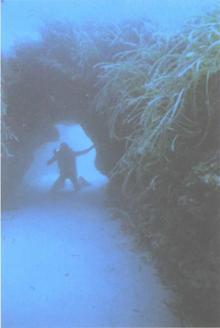 Underworld: The Mysterious Origins of Civilization
Underworld: The Mysterious Origins of Civilization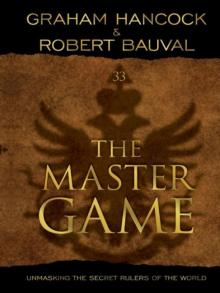 The Master Game: Unmasking the Secret Rulers of the World
The Master Game: Unmasking the Secret Rulers of the World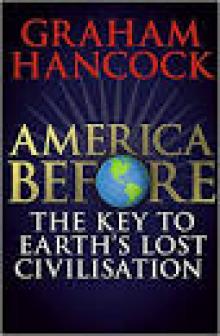 America Before
America Before Entangled
Entangled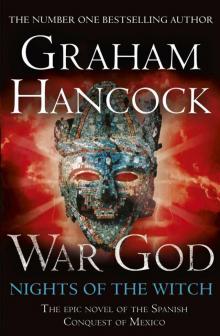 War God: Nights of the Witch
War God: Nights of the Witch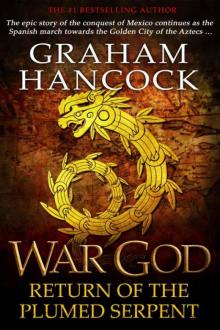 War God: Return of the Plumed Serpent
War God: Return of the Plumed Serpent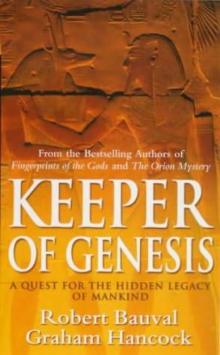 The Message of the Sphinx AKA Keeper of Genesis
The Message of the Sphinx AKA Keeper of Genesis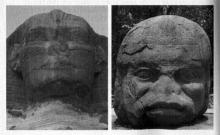 Fingerprints of the Gods
Fingerprints of the Gods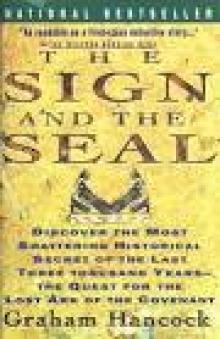 The Sign and the Seal
The Sign and the Seal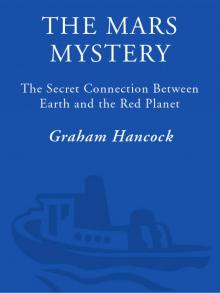 The Mars Mystery: The Secret Connection Between Earth and the Red Planet
The Mars Mystery: The Secret Connection Between Earth and the Red Planet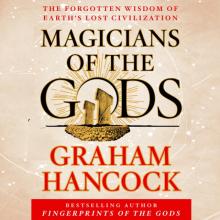 Magicians of the Gods: The Forgotten Wisdom of Earth's Lost Civilization
Magicians of the Gods: The Forgotten Wisdom of Earth's Lost Civilization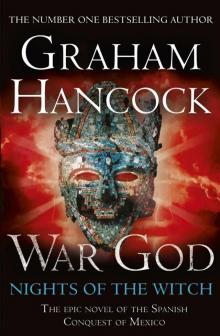 War God
War God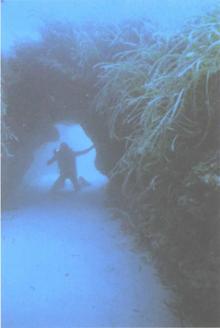 Underworld
Underworld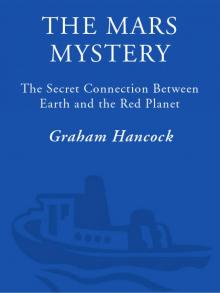 The Mars Mystery
The Mars Mystery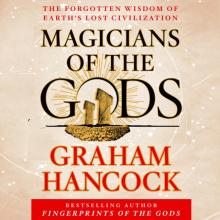 Magicians of the Gods
Magicians of the Gods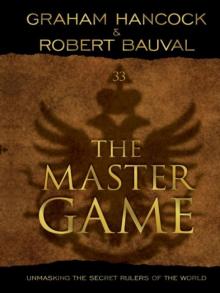 The Master Game
The Master Game